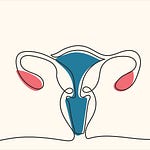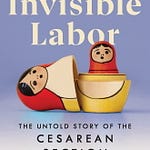“These are invented problems. They can be solved. We just have to decide to solve them.” – Anu Sharma
My first thought when I walked into the Millie clinic in Berkeley, California last May: “Damn, I wish this existed when I was pregnant!”
I had popped in to visit the co-founder and CEO, Anu Sharma, to chat about all things maternal health and get a tour of the clinic that opened its doors in 2022. The whole clinic radiated the energy of a hug. I could feel my shoulders drop, my body reflexively take in a deep breath and a long exhale.
The attention to spatial details was always part of the plan. A clinic that doesn’t feel clinical. With cozy, washable gowns to change into. Soft lighting, soft scents, soft music. Spa vibes. An atmosphere that somehow manages to communicate “we got you.”
Millie is one of few startups rethinking (thoughtfully) about the way women’s healthcare is delivered. A “modern maternity clinic” housed in a building directly across the street from the hospital where I delivered both my babies over a decade ago.
Millie popped back into my head after seeing the (unexpected) incredible response to the Ignored Health Risk of Motherhood post and the way the interviews with Dr. Devika Bhushan and Dr. Rachel Somerstein resonated — how the process of birth centers the baby and fetal/infant risk and feeds off the self-sacrifice of the “good mother” narrative:
“If women are expected to deprioritize their own humanity from the very minute they begin carrying a bunch of cells (that may or may not turn into a baby), do they even have a chance of dislodging the maternal martyrdom framework for every other aspect of parenthood?”
So many elements in those discussions and considerations of how to reduce stress during this phase of life, came back to the question: “what would healthcare look like if we started from a mom-centric approach to pregnancy, birth, and postpartum?”
Millie seems like a pretty darn close example of what is possible. Not only does the vibe of the clinic space demonstrate priorities around experience, the Millie model of care also centers the birthing person and their body, as emphasized in a stated core belief: “We trust you with your body. We put you at the center of your experience because we believe in both human intuition and clinical excellence.”
And their model works.
Early data show a decrease in NTSV C-section and a decrease in preterm birth (with the highest difference from national averages for Black mothers) for Millie patients. They have an over 70% success rate for VBACs. Over 65% of parents diagnosed with perinatal anxiety or depression were in remission by the end of Millie postpartum care. And this is just the start of the positive outcomes they are tracking.
But even if you are in the camp that doesn’t give a shit about maternal outcomes, Millie has continued to prove out that a midwifery-led model of care is financially viable AND cost-saving (in many places but not all… but more on that later…)
Fast-forward to a few weeks ago when I sent off an email to Anu: “I wrote something recently that seems to really have hit a nerve and I wanted to do a follow-up about the solutions that already exist and the (possible) future of maternal healthcare – specifically, a mom-centric approach to perinatal care – and that idea just screams ‘MILLIE!’ to me. Let’s chat!”
Anu responded immediately: “My overall take on the current state is that the desire for a baby boom is not compatible with the current maternal health care model or the already low reimbursement rates that are driving physician burnout & killing OB practices. We are not going to see much progress until we start valuing mothers and those who care for them. I know this isn’t particularly uplifting and am happy to speak to the more positive work we are doing, but am mindful that it can mask the realities of what innovation needs!”
Woof. I knew we were in for an interesting discussion
With an administration that wants a “baby boom” while planning drastic cuts to Medicaid, limited access to critical tools and medicine needed for OB’s to do their jobs, ignoring any need from the humans carrying, birthing, and caring for those booming baby, it’s more important than ever to target the most effective levers of change. It’s tempting to join the “blow up the model and build something better!” rally cry (yeah, it's me) but the conversation with Anu added a critical angle: how do we ground the rally cry within the constraints of the healthcare system, target the right levers of change, and continue to effectively move the needle forward.
[Spoiler: it mostly comes down to economics and public funding so this is also an urgent reminder to call your Senators because if the fucking “Big Beautiful Bill” passes (even writing that name out makes me want to vomit) in its current form, Medicaid will be chopped and the math that didn’t even work well before will become even more problematic.]
I don’t have audio to share for this discussion so for my full conversation with Rachel, you will have to visit the Substack post HERE. With that said, this audio version does have a few favorite points from our discussion.














Share this post